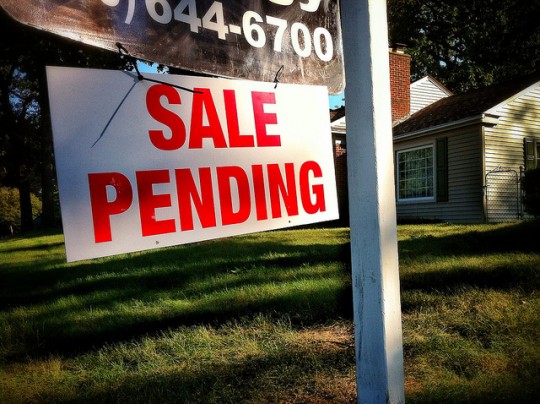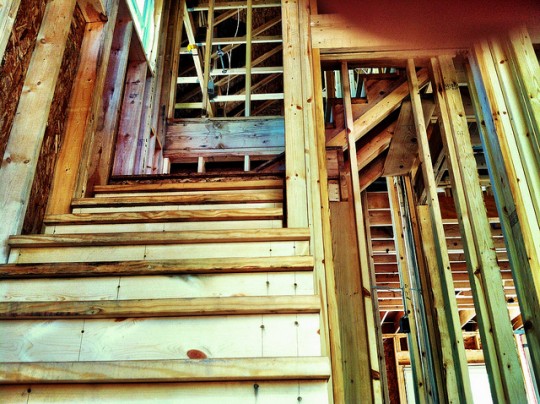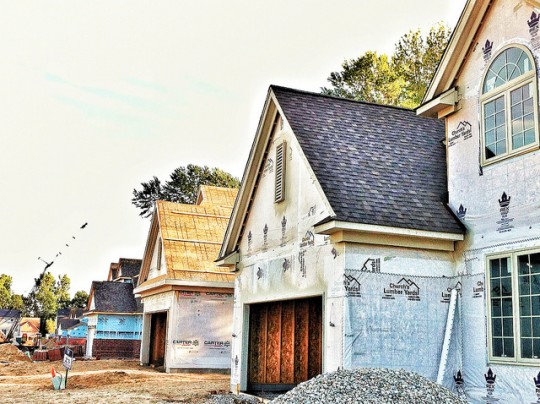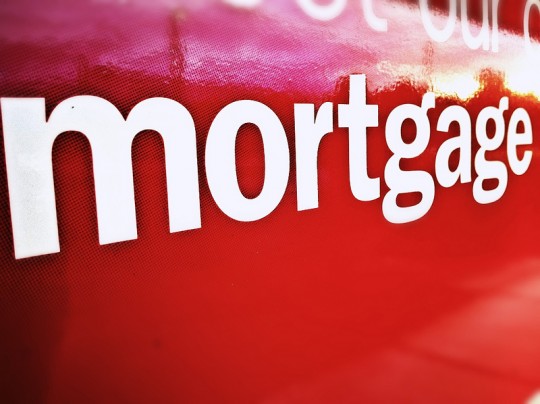The National Association of Realtors’ Pending Home Sales Index measures the number of contracts to buy homes signed each month. The index – which is a good indicator of future sales of previously owned homes – jumped 3.4 percent in March, beating economists’ expectations and providing the first signs of a spring sales spike. Lawrence Yun, NAR’s chief economist, said the gain was inevitable. After a slow winter, buyers had an opportunity to look at homes and are beginning to make offers, Yun said. Regionally, pending sales were up in the Northeast, South, and West, falling only in the Midwest, where they slipped 0.8 percent. Home sales are expected to trend upward this year, as more homes are put up for sale and the economy and job market continue their ongoing recovery. Still, despite the fact that existing-home sales are expected to rise throughout this year and next, total sales in 2014 will likely be lower than they were the year before. The NAR expects total sales to reach 4.9 million this year. In 2013, sales were estimated at nearly 5.1 million. More here.
Tag Archive for spike
Housing Starts Show Signs Of Stabilization
New home construction was flat in February, falling just 0.2 percent from the previous month according to estimates from the U.S. Census Bureau and the Department of Housing and Urban Development. Combined with upwardly revised January numbers, the results are a sign that the housing market may be regaining its footing after a particularly harsh winter slowed activity across much of the country. The coming months should provide an additional boost to new residential construction with inventory low in many parts of the country and buyer demand increasing as the weather warms. Also in the release, there was a 7.7 percent increase in permits to build privately-owned housing units. Despite the gains, however, the improvement was largely due to a spike in permits to build multi-family housing rather than single-family homes. Permits to build single-family homes fell slightly from the month before and are now at a seasonally adjusted annual rate of 588,000, down from 599,000 in January. More here.
New Home Sales Hit 5 ½ Year High
Sales of new single-family houses surged to a five-and-a-half year high in January, jumping 9.6 percent from an upwardly revised December estimate. The sales spike was welcome news after harsh winter weather led to the slowing of a number of economic indicators during the month. It was also unexpected. Surveyed economists forecast a slight dip in sales for the month, expecting them to fall rather than rising to their highest level since July 2008. January sales were 2.2 percent above year-before levels and reached a seasonally adjusted annual rate of 468,000 units. Regionally, new home sales saw double-digit increases in the Northeast, West, and South, while tumbling 17.2 percent in the bitterly cold Midwest. The median sales price of new houses sold in January was $260,100; the average price was $322,800. Also, there was a 4.7-month supply of new homes available for sale at the end of month. More here.
Cost of Buying Rises, Still Cheaper Than Rent
With last year’s price and mortgage rate increases, the estimated monthly house payment for a median-priced, three-bedroom home has risen, according to a new analysis from RealtyTrac. But, though affordability levels have fallen, buying a home was still cheaper than renting in 91 percent of the 325 counties included in the report. Daren Blomquist, vice president at RealtyTrac, said the monthly cost of owning a home is still less than renting in the majority of markets but a combination of rising home prices and increasing interest rates during the second half of 2013 has caused the cost of owning a home using traditional financing to jump over the last year. In fact, the estimated monthly payment – including mortgage, insurance, taxes, maintenance, and subtracting the estimated income tax benefit – increased an average of 21 percent from a year earlier. The increase was driven, in part, by a 10 percent spike in median prices across the 325 counties included in the analysis. More here.
Builders Optimistic About New Home Sales
All three components of the National Association of Home Builders Housing Market Index improved in December. The three index components, which measure current sales conditions, sales expectations, and traffic of prospective buyers, are scored on a scale where any number above 50 indicates more builders view conditions as good than poor. According to the most recent release, the current-sales component jumped six points to 64, while the index measuring expectations for future sales rose two points to 62 and traffic of prospective buyers increased three points to 44. David Crowe, NAHB’s chief economist, said the recent spike in mortgage rates has not deterred consumers, as rates are still near historically low levels. Crowe believes this month’s gain is due, in part, to the release of pent-up demand caused by the uncertainty surrounding October’s government shutdown. Overall, builder confidence in the market for newly built, single-family homes improved four points to a reading of 58. More here.
Surging New Home Sales Not What They Seem
Delayed due to the government shutdown, new home sales data for September and October was released together this year. The results, from the U.S. Census Bureau and the Department of Housing and Urban Development, show a 25.4 percent sales spike in October from September’s rate. The surge is the largest in more than 30 years but isn’t all it seems to be. In fact, the report includes a downward revision of August’s estimate that dropped that month’s sales estimate by 15 percent. From there, new home sales fell an additional 6.6 percent in September. That means, October’s skyrocketing sales were merely making up for a slow end of the summer sales season. Peter Boockvar, chief market analyst of economic advisory firm The Lindsey Group, told NBC News that weak sales activity from July through September was clearly based on mortgage rates. According to Boockvar, falling rates in October brought out buyers who may have previously been on the fence. More here and here.
Average Mortgage Rate Falls, Demand Surges
According to the Mortgage Bankers Association’s Weekly Applications Survey, the average contract interest rate for 30-year fixed-rate mortgages fell last week, reaching the lowest point since June. The drop in rates was the second in as many weeks and kicked off a surge in demand for home loans. The Market Composite Index, which measures both purchase and refinance volume, was up 6.4 percent from one week earlier, due to a 9 percent increase in refinance demand and a 2 percent spike in purchase loan activity. The survey, which covers 75 percent of all U.S. residential mortgage applications, has been conducted weekly since 1990. More here.







